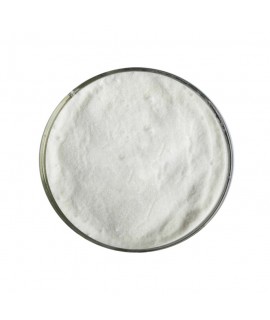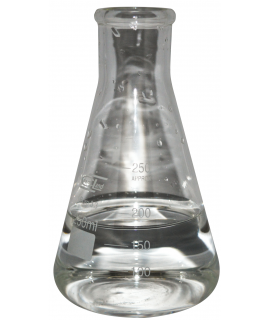SODIUM LAURYL SULFATE (SLS-SDS), 92%, kg
3.99 €
SLS, CAS 68955-19-1, SDS, sodium monododecyl sulfate; INCI SODIUM LAURYL SULFATE, sodium lauryl sulfate; sodium monolauryl sulfate, EMPICOL LZ/B
Parameter | Attribute |
Sodium lauryl sulfate | SLS, SDS, sodium monododecyl sulphate; sodium lauryl sulphate; sodium monolauryl sulphate; sodium dodecyl sulphate; sodium n-dodecyl sulphate; sulphuric acid monododododecyl ester sodium salt, EMPICOL LZ/B |
Formula | CH3(CH2)11OSO3Na |
Structure | |
IUPAC | Sodium dodecyl sulfate |
INCI | SODIUM LAURYL SULFATE |
CAS | 68955-19-1 |
Molar mass | 288.372 g/mol |
Density | 0.65 g/cm3 (bulk density) |
Solubility | Miscible in any ratio |
Sodium dodecyl sulphate (SDS) or sodium lauryl sulphate (SLS), sometimes spelled sodium lauryl sulphate, is an organic compound found as an anionic surfactant used in many cleaning and hygiene products. Its hydrocarbon tail, together with a polar 'head group', gives the compound amphiphilic properties, making it useful as a detergent. SDS is also part of blends made from inexpensive coconut and palm oils. SDS is a common ingredient in many household cleaning, personal care and cosmetic, pharmaceutical and food products as well as industrial and commercial cleaning products.
In cosmetics, it is used as a highly active surfactant for the removal of greasy, tough soils. It is a dried powder of sodium lauryl sulphate which allows the formation of a fine creamy foam. It is also a good emulsifier and an excellent wetting agent with good electrolyte tolerance, making it ideal for use as a basic surfactant. High concentrations are used for floor and car washing; low concentrations are used for toothpaste, shampoos, shaving and cosmetic bath foams. High foaming. SLS is also used for its thickening properties in the presence of higher levels of electrolytes. Main INCI functions:
- Cleaning: helps to maintain a clean surface
- Denaturant: Makes cosmetics unpleasant. Mainly added to cosmetics containing ethyl alcohol
- Foaming: collection of small air bubbles or other gases in a small volume of liquid by changing the surface tension of the liquid.
- Surfactant: reduces the surface tension of the cosmetic and contributes to the even distribution of the product on application
In the cleaning industry, SDS is mainly used in laundry detergents for a wide range of cleaning products. It is a highly effective surfactant and is used in any task requiring the removal of greasy stains and residues. For example, it is found in higher concentrations in industrial products including engine degreasers, floor cleaners and car exterior cleaners.
In pharmaceuticals, sodium lauryl sulphate is used as an ionic solvent and emulsifier, suitable for use in liquid dispersions, solutions, emulsions and micro-emulsions, tablets, foams and semi-solids such as creams, lotions and gels. In addition, SLS helps the tablets to moisten and has a lubricating effect during manufacture.
In medicine, SLS has been proposed as a potentially effective topical microbicide for intravaginal administration to inhibit and possibly prevent infections caused by a variety of enveloped and non-enveloped viruses, such as herpes simplex viruses, HIV, and Semliki Forest virus.
In the food industry, sodium dodecyl sulphate, synonymous with sodium lauryl sulphate (SLS), is considered as a Generally Recognised As Safe (GRAS) ingredient for use in food. It is used as an emulsifier and whipping aid. It is used as an emulsifier in egg whites or egg white products up to a maximum of 0,1 % by weight of egg whites. In frozen or liquid egg whites and as a whipping agent for the preparation of marshmallows, it shall not exceed 0,5 % by weight of gelatine. SLS has been shown to temporarily reduce the perception of sweetness.
In biochemistry, this compound is also used in the electrophoresis of polyacrylamidosols during DNA extraction to denature proteins. It breaks the non-covalent (hydrogen) bonds between proteins and disrupts the overall structure of the molecule.
In schools, SLS is used in fun experiments such as "elephant toothpaste", "burning foam", "soap bubbles", "sea of foam", etc., where it is necessary to induce foaming and to keep them stable for a longer time at different pH and temperature conditions.
Important: Add the item to your basket, fill in the recipient's details and confirm your order. Thank you!
To save your precious time, we will deliver your order to your address at a time convenient for You!
*- The pictures of the goods may not correspond to the actual appearance, colour, assembly or shape of the goods and their packaging. The information in the product description is of a general nature and may not correspond to the information on the packaging of the product and may not be the exact use of the product. The information given on the stocks and prices of goods may, in certain cases, differ from the actual prices and stocks of goods
Signal word: DANGER |
Hazard icons:
|
Danger phrases: H315 Irritating to skin. H318 Causes eye damage. H412 Harmful to aquatic organisms, causes long-term effects. |
Precautionary statements: P280 Wear protective gloves/protective clothing/use eye/face protection. P302 + P352 IN CASE OF CONTACT WITH SKIN: wash off with plenty of soap and water. P305+P351+P338 IN EYES: Wash gently with water for several minutes. Remove contact lenses, if present and if easy to do so. Continue to wash eyes. P310 Call the ACCIDENT CONTROL AND INFORMATION OFFICE or seek medical advice immediately. P501 Dispose of contents/container in accordance with local/regional/national/international legislation. |
Related products
(8 other products in the same category)













